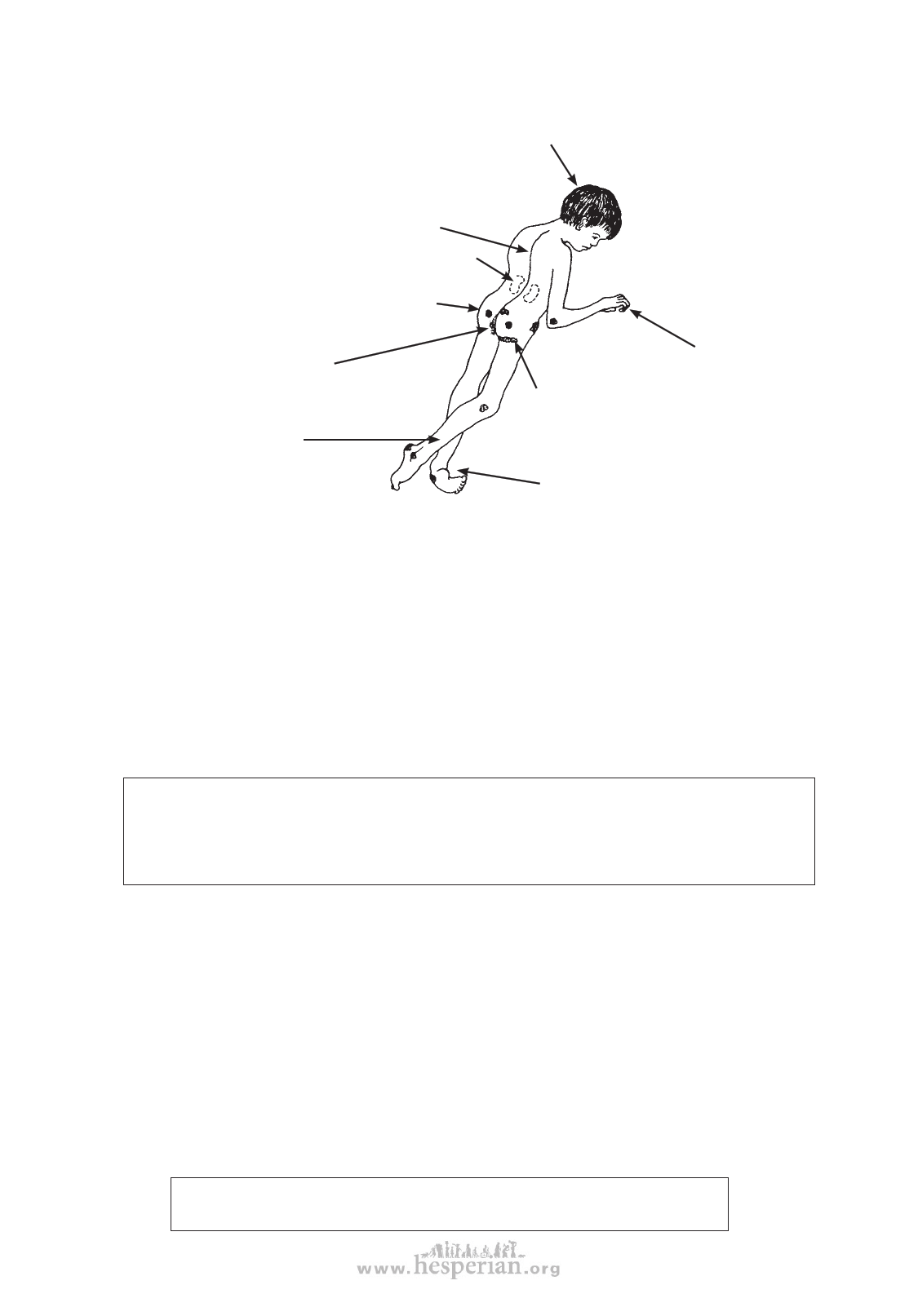
SPINAL CORD INJURY
Common secondary problems in children with spinal cord injury
181
• Leg bones do not grow as fast, • sudden high blood pressure with pounding • periods of depression,
become thin and weak, and
headache (dysreflexia) due to
anger, and difficulty
can break easily, especially if
irritation in non-feeling parts
accepting disability
the child does not bear weight
(quadriplegics only) (See p. 187.)
(See p. 178.)
on them. (See p. 190.)
• Child suffers
• curving or ‘hunching’
of spine (See p. 184.)
greatly in
hot weather
• urinary infections (may involve
• increased risk of
pneumonia in
because body
kidneys and cause death)
quadriplegics, due
loses ability
to control its
• pressure sores (bed sores) in
to weak breathing
muscles (See p. 182.)
temperature.
body areas where feeling has
(See p. 187.)
been lost (See Chapter 24.)
• rash or sores between legs
due to loss of urine and
bowel control (See p. 186.)
• pressure sores caused
• burns or other
injury where
body cannot feel
(See p. 185.)
by long-leg brace
• spasticity causes legs to
straighten and pull together
and feet to ‘tiptoe’ stiffly
(See p. 176.)
• contractures—especially of
—— elbows and hands (in quadriplegics)
—— hips (bend up and pull together)
—— tiptoe and club foot deformities—
especially in small children (See p. 184.)
To prevent or reduce the harmful effects of these problems, special precautions
need to be taken early and continued throughout life.
EARLY CARE FOR THE SPINAL CORD INJURED PERSON
Early care following spinal cord injury is best done in a hospital, especially
if the child is likely to get good nursing care. Family members should stay with the
child in the hospital to make sure the child is kept clean and turned regularly, so that
bed sores and pneumonia are avoided. (Busy hospital staff with little experience
treating spinal cord injuries sometimes let severe bed sores develop—which may
threaten the child’s life.)
CAUTION: During the first 6 weeks, or until any breaks in the bone have healed, take great care
when turning the child so that the angle of his back, neck, and head does not change. Use
the same methods and precautions used in lifting a newly injured person onto a stretcher (see
p. 180). When the neck or back has healed, the child can start lying on his stomach, at first for 10
minutes and then longer if there are no problems.
Surgery of the spine may or may not be necessary. After surgery, the person must lie
very still for at least 6 weeks. The main purpose of surgery is to prevent more damage—
not to cure the paralysis. The damage already done to the spinal cord cannot be
corrected with surgery or medicine.
Preventing pressure sores (bed sores)
When feeling has been lost, pressure sores can easily form on the skin over bony
areas—especially on the hips and butt. The biggest risk of sores is in the first weeks
after the injury. This is because the child must stay very still, and has not yet learned
to move or turn over his body. Prevention of pressure sores is extremely important,
and needs understanding and continuous care, both by the child and those caring for
him.
BE SURE TO READ CHAPTER 24 ON PREVENTION AND TREATMENT
OF PRESSURE SORES.
disabled village children